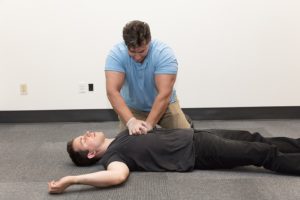An electric shock involves damage to the skin, muscles, bones and organs by the passing of electric current in the body. Depending whether it is mild or severe, an electric shock can be a life-threatening emergency.
The usual factors that increases the risk for ending up with an electric shock include lightning, faulty electrical equipment, poor insulation and an electric arc formation from high voltage lines.
What are the signs?
The usual indications of an electric shock include the following:
- Heart attack
- Shaking and tremors
- Heart arrhythmias
- Seizures
- Burn marks such as blisters
- Headache

If the individual has difficulty or ceases to breath, execute CPR right away. - Fractures from falls
- Respiratory failure
- Visual issues
- Loss of consciousness
Management of electric shock
- The initial step is to break contact with the source of electricity right away. This is done by turning off the switch or circuit breaker or using a non-conductive material such as cardboard, wooden stick or plastic item to push the individual away from the source. Do not touch the victim until this is done.
- In case the source of electricity is a high voltage line, do not approach the individual but call for emergency assistance. Only the electric power company can shut down the high-power lines. An option is to push the individual away from the source with a non-conducive object such as those made of plastic, wood or cardboard if available.
- If the individual has difficulty or ceases to breath, execute CPR right away.
- Shock can be prevented by lying the individual down with the legs elevated above the level of the heart and cover him/her with a blanket.
- For minor external burns, cool them down under running water or soak for 10 minutes until the site cools down. Cover the area with cloth or sterile gauze.
Once these measures are carried out, seek further care with a healthcare professional as early as possible.
Quick Note / Disclaimer
The material posted on this page on electric shock is for learning and educational purposes only. To learn how to properly manage this condition, register for a first aid and CPR course with Saskatoon First Aid.

